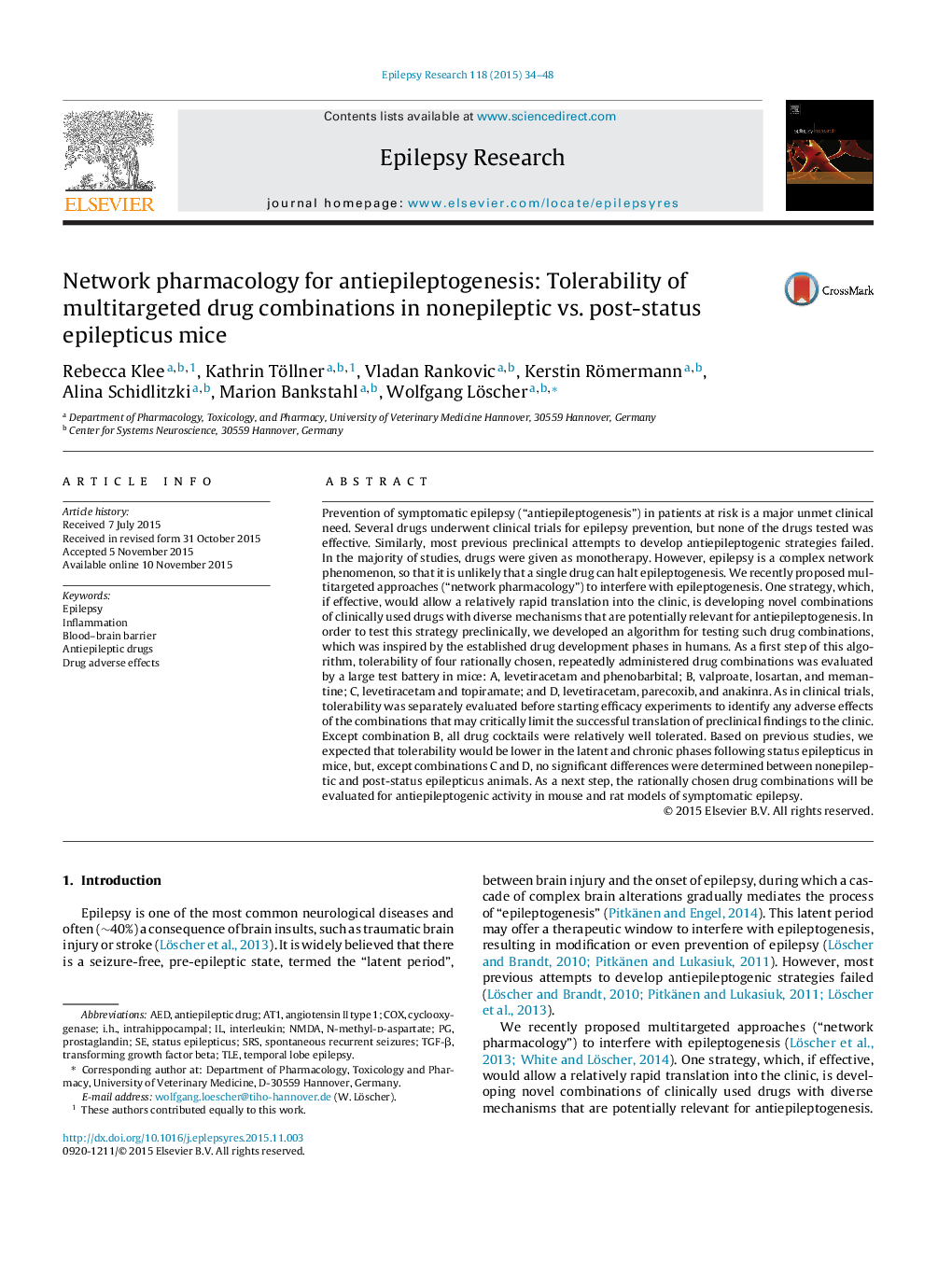| کد مقاله | کد نشریه | سال انتشار | مقاله انگلیسی | نسخه تمام متن |
|---|---|---|---|---|
| 6015309 | 1579905 | 2015 | 15 صفحه PDF | دانلود رایگان |

- Prevention of epilepsy in patients at risk is a major unmet clinical need.
- Epilepsy is a network phenomenon, so that a single drug can probably not halt epileptogenesis.
- Combinations of multitargeted drugs may be more effective, but have not been tested as yet.
- An algorithm for testing drug combinations in naive and post-status epilepticus rodents is presented.
- As a first step, tolerability of rationally chosen drug combinations was evaluated in mice.
Prevention of symptomatic epilepsy (“antiepileptogenesis”) in patients at risk is a major unmet clinical need. Several drugs underwent clinical trials for epilepsy prevention, but none of the drugs tested was effective. Similarly, most previous preclinical attempts to develop antiepileptogenic strategies failed. In the majority of studies, drugs were given as monotherapy. However, epilepsy is a complex network phenomenon, so that it is unlikely that a single drug can halt epileptogenesis. We recently proposed multitargeted approaches (“network pharmacology”) to interfere with epileptogenesis. One strategy, which, if effective, would allow a relatively rapid translation into the clinic, is developing novel combinations of clinically used drugs with diverse mechanisms that are potentially relevant for antiepileptogenesis. In order to test this strategy preclinically, we developed an algorithm for testing such drug combinations, which was inspired by the established drug development phases in humans. As a first step of this algorithm, tolerability of four rationally chosen, repeatedly administered drug combinations was evaluated by a large test battery in mice: A, levetiracetam and phenobarbital; B, valproate, losartan, and memantine; C, levetiracetam and topiramate; and D, levetiracetam, parecoxib, and anakinra. As in clinical trials, tolerability was separately evaluated before starting efficacy experiments to identify any adverse effects of the combinations that may critically limit the successful translation of preclinical findings to the clinic. Except combination B, all drug cocktails were relatively well tolerated. Based on previous studies, we expected that tolerability would be lower in the latent and chronic phases following status epilepticus in mice, but, except combinations C and D, no significant differences were determined between nonepileptic and post-status epilepticus animals. As a next step, the rationally chosen drug combinations will be evaluated for antiepileptogenic activity in mouse and rat models of symptomatic epilepsy.
Journal: Epilepsy Research - Volume 118, December 2015, Pages 34-48